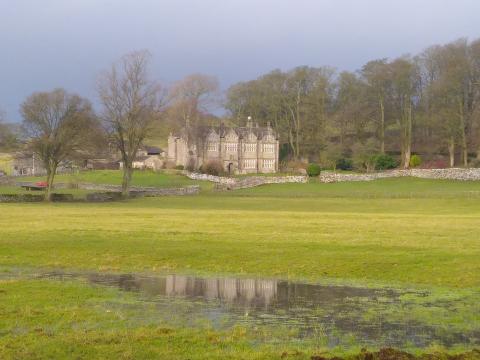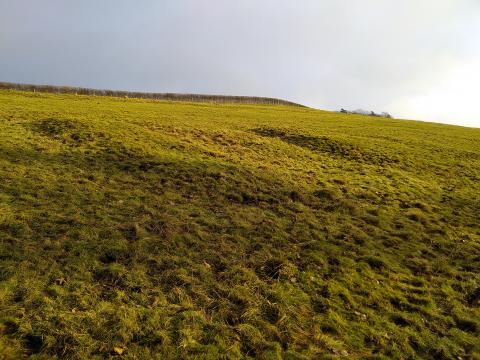Giants Grave, Friars Head

Between Eshton and Winterburn in the Yorkshire Dales, I saw the most magnificent Elizabethan or Jacobean farmhouse called Friars Head, a reference, doubtless, to the site’s former owners. Just up the hill overlooking it, however, are some long protuberances in the ground, marked on the Ordnance Survey as ‘Giants Graves’. My curiosity aroused, I set off to inspect.

A couple of farmers to the rear of Friars Head had been put to some trouble by a defiant cow which they were attempting to move; I heard their shouts and frustration. Seeing me, one of the rode up. “Looking for something?” asked the brusque fellow atop a quad bike. Expecting as short a shrift as he had given the errant bovine, I meekly explained that I was come to see the giant’s grave. He warmed to me, and pointed them out, but dismissed their name as fanciful. Confirming some wider reading of my own, he said they were ancient pillow mounds, a term used for the medieval practice of building artificial warrens from which to breed rabbit meat. Not being native to this land, and not then found abundantly, their meat was something of a delicacy, and the friars probably made extra cash by selling it. Within a century or so, the rabbits, like the friars who bred them, were deemed a general nuisance.
The notion that some very tall people are buried under those mounds is one harder to believe than that they are the remains of a rabbit-breeding industry for the plates of the well-to-do. It is interesting that we attribute darker, if more interesting, explanations to the phenomena we encounter. Only last summer, did not I of all people, momentarily suspect the machinations of a poltergeist? Do we not sometimes assume that God is punishing us when some misfortune befalls or unpleasant circumstances combine? When some stray thought enters our head, do not some Christians reckon themselves the devil’s personal project that very day? I do not doubt the devil is real, that God chastises, nor that spirits exist. Yet sometimes, the plain and ordinary, the common-place and the regular, are more likely explanations than the colourful, the extreme, the bizarre and the fascinating. In Luke 13:3-5, Jesus warns against attributing powerful theological explanations to tragedies, instead urging His listeners to address their attention to the gospel:
“I tell you, no; but unless you repent you will all likewise perish. Or those eighteen on whom the tower in Siloam fell and killed them, do you think that they were worse sinners than all other men who dwelt in Jerusalem? I tell you, no; but unless you repent you will all likewise perish.”
There may be no giants’ graves at Flasby by that grand old house, but graves there are for each of us, though they be yet undug.

- Log in to post comments


 Sunday Worship 10.45am & 6.00pm
Sunday Worship 10.45am & 6.00pm